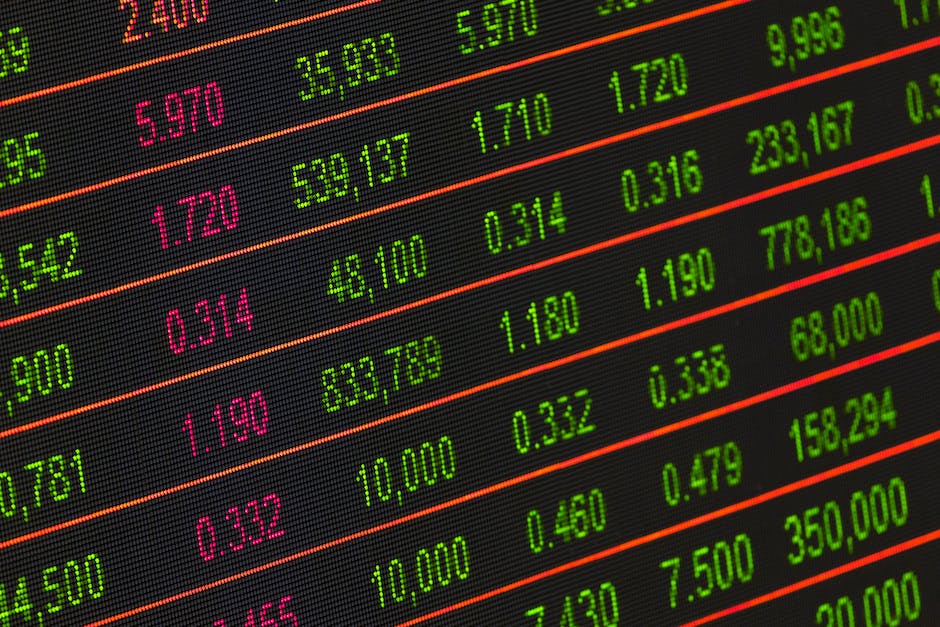In today’s global economy, the foreign exchange (forex) market plays a critical role in enabling cross-border trade, investments, and financial transactions. One of the pivotal tools that aids individuals and institutions in navigating this complex market is Forex Trading Signals. These signals not only enhance understanding of the market’s dynamics but also assist in making informed trading decisions. This discourse offers an all-inclusive guide on forex trading signals, their interpretation, applications, the software and platforms that generate them, as well as their advantages and disadvantages. Finally, for those contemplating using these signals, we delve into how to choose a reliable forex trading signals provider.
Understanding Forex Trading Signals
What are Forex Trading Signals?
Forex trading signals are essentially buy and sell indicators that alert investors, traders, and other market players to potentially profitable opportunities in the currency market. These signals provide critical information such as entry points, exit points, stop loss levels, and profit targets for different currency pairs.
Generation of Forex Trading Signals
Trading signals can be generated in two main ways: manually or automatically.
Manual forex signals are generated by experienced and knowledgeable human traders who monitor and analyze the forex market. These traders make trading decisions based on their analysis of various factors such as economic indicators, market trends, and geopolitical events.
Automated forex signals, on the other hand, are generated by computer software or trading robots using sophisticated algorithms and models. These programs analyze vast amounts of market data and generate signals based on pre-set conditions and parameters.
Exploring the Diversity of Forex Trading Signals
Forex trading signals are varied, each type providing unique insights into market behavior. The primary classifications include:
- Trend-based Signals: These are generated depending on the current market trend. In an upward (bullish) trend, the signal might recommend a buy, and in a downward (bearish) trend, it could direct a sell.
- Price Action Signals: These signals are informed by historical price movements. Traders frequently use them in combination with other analysis types to validate their trading strategies.
- News-based Signals: Significant economic events and news can spur considerable price shifts in the forex market. These signals supply traders with insights into how such occurrences could affect currency values.
- Range Signals: In range-bound markets, where currency prices move within a set range, these signals are beneficial. They help pinpoint the upper and lower price boundaries.
- Breakout Signals: These signals flag when the price exits a certain range or pattern, often bringing about notable price variations.
Grasping the nature of forex trading signals and their distinctions can enhance decision-making skills and boost prospects of attaining success in the unpredictable forex market.

How to Use Forex Trading Signals
Diving Deeper into Forex Trading Signals
Forex trading signals are, essentially, trade cues for the foreign exchange market. These signals offer a comprehensive trading plan, outlining entry and exit points, along with strategies for risk management. They act as a roadmap for making investment decisions in the forex market, providing investors with invaluable foresight.
Typically, a Forex signal encapsulates four basic pieces of information: the currency pair, the action to be taken (buy or sell), the entry price, and the stop-loss and take-profit levels. Experienced traders, automated forex systems, or specialized agencies usually provide these signals. Distribution methods for these signals vary and can include SMS, email, or direct posting on trading platforms.
Currency Pair in Forex Trading Signals
Currency pair, the first element in a forex trading signal, refers to the quotation of two different currencies. Here, one currency is used to buy another. The first currency listed in the pair is the base currency, while the second one is the quote currency. Forex trading signals indicate which pair you should trade. For instance, in a signal that says “EUR/USD, Buy, 1.2000, SL: 1.1950, TP: 1.2100,” the currency pair is Euro (EUR) against the US dollar (USD).
Date and Time in Forex Trading Signals
Most forex signals also indicate the date and time of the trade. This information is crucial as the forex market is significantly affected by time due to its 24-hour operation. The date and time in a signal follow either the GMT or the EST time zones. Therefore, it is essential for traders to keep track of their local time relative to these time zones to execute the signals accurately.
Bid and Ask Price in Forex Trading Signals
Bid and ask prices are the rates at which a trader can sell and buy a currency pair, respectively. When a signal suggests ‘Buy,’ the ask price is used, while the bid price is used when the signal suggests ‘Sell.’ In a forex trading signal, the bid and ask prices guide the trader on when to enter and exit a trading position.
Stop Loss and Take Profit in Forex Trading Signals
Finally, stop loss (SL) and take profit (TP) points are two critical components in risk management. The SL point is a price at which a trade will automatically close if the market moves against it to prevent further loss. Conversely, the TP point is a price at which a trade will close if the market moves in its favor to secure profit. Balanced risk management is a key factor in achieving trading success, and these elements in a trading signal help traders manage their risks effectively.
Understanding and Utilizing Forex Trading Signals
For successful use of Forex trading signals, it’s essential for traders to completely comprehend each integral component. Once these signals are understood, they can be integrated into a trader’s strategies, depending on their level of risk tolerance and financial goals. Forex trading signals can be a powerful asset. However, they should be paired with independent market analysis for comprehensive and thorough decision making.

Software and Platforms for Forex Trading Signals
A Look at Forex Trading Signal Providers
In today’s digital age, traders have a wide range of software and platforms at their disposal offering Forex trading signals. These technologies are built to notify traders of potential trading opportunities. Some are independent applications, while others are included within broader trading platforms.
Both free and premium Forex trading signal services are available. Free services may offer fundamental features like basic buy/sell signals. On the other hand, premium services are often more comprehensive, delivering information such as economic news, complex technical analysis, and bespoke trading suggestions.
Free Forex Trading Signal Platforms
Free trading signal software tends to be limited in scope, usually providing only the baseline of buy or sell signals. In many cases, these signals are generated by automated algorithms that make trades based on set criteria. They may simply suggest a specific currency pair to buy or sell at a specific time, but don’t typically provide additional details such as stop loss or take profit points.
However, there are some free services that offer a bit more information. For example, some services may provide daily market analysis that includes a brief overview of the trends they’re seeing. While these free services can be helpful, they tend not to provide enough context or detail for a complete trading strategy.
Paid Forex Trading Signal Platforms
Paid Forex signals services, on the other hand, typically provide a much more detailed and nuanced set of information. These services can offer signals based on more sophisticated algorithms or even human analysis. The signals may include entry and exit points, stop losses, and take profit suggestions. Also, they can detail the technical analysis or fundamental factors that led to the signal.
Along with detailed trading recommendations, paid signal-providing systems often include supplementary resources to assist traders in understanding and navigating the Forex market. This may involve historical data, charts, financial news updates, or even educational content.
Reliability of Forex Trading Signal Platforms
The reliability of both free and paid Forex trading signal services can widely vary. This is primarily influenced by the method of generating signals, such as automated algorithms versus human analysis, as well as the depth of detail provided in the signal.
In the world of Forex trading, a signal’s reliability often corresponds with the credibility of its source. Trusted financial companies and experienced analysts generally offer more reliable signals.
Picking a Suitable Forex Signal Service
Deciding on a Forex signal service involves considering various elements such as the service cost, the depth and detail of signals provided, the ease of utilizing the service, and the credibility of the platform. Going through the reviews and ratings given by other users can offer meaningful input concerning the platform’s dependability and efficiency. To ascertain the best fitting platform for your trading style, experiment with multiple platforms.
It’s pivotal to bear in mind that even the most extensive and trustworthy Forex signals are no substitutes for a solid comprehension of the Forex market and skilled trading abilities. Dedication to learning and forming your personalized trading strategy is indisputably key to success in Forex trading.

The Pros and Cons of Using Forex Trading Signals
Comprehending Forex Trading Signals
Forex trading signals are, in essence, indications that foreign exchange market investors rely on. These signals provide information or analysis advising traders on whether to buy or sell currencies. They give traders an intel into market patterns and predictions based on economic data, technical examination, and updates on market news. Making use of these trading signals can aid in simplifying the normally cumbersome process of analysing the market, thus facilitating both newcomers and veterans in forex trading to operate more efficiently.
Pros of Using Forex Trading Signals
There are several advantages of using forex trading signals. Firstly, they reduce the risk factor associated with forex trading. Forex trading signals provide an in-depth analysis of market conditions that can guide traders on when it’s the best time to make a trade. This can reduce the risk of losses dramatically.
Another pro of using forex trading signals is that they save time. With automated signals, traders do not need to spend hours analyzing the market conditions. The signals can instantly inform traders of favorable trading opportunities.
Finally, forex trading signals are beneficial for beginner traders as they can provide valuable insights and increase understanding of the forex market. The signals can aid beginners in decision making and help them to learn the ropes of forex trading more quickly.
Cons of Using Forex Trading Signals
Despite numerous benefits, there are also drawbacks associated with forex trading signals. The first disadvantage is the potential for false signals. Sometimes, even the best analysis tools can give false signals due to the unpredictable nature of the forex market. This can lead to losses if traders rely solely on these signals without conducting their own analysis.
Secondly, some forex trading signals are offered at a high cost. While there are free signals available, they may not always provide the most accurate information. Paid signals often come at a significant cost which may not be sustainable, especially for newbie traders.
Finally, the reliance on forex trading signals can limit the development of personal trading strategies. Understanding and experiencing the market first-hand is key to successful forex trading. Relying heavily on signals may hinder a trader’s ability to develop skills and understanding required to navigate the market.
Striking the Right Balance for Informed Decision Making
As one navigates the complex world of forex trading, considering both the advantages and disadvantages of forex trading signals becomes crucial. These signals can offer valuable insights and potentially increase profitability. However, a critical drawback is reliance on them may lead to potential losses and stifle the development of essential trading skills. By utilizing forex trading signals as a form of guidance, whilst also conducting personal market analysis and crafting individual trading strategies, one can help minimize risks and improve the likelihood of trading success.

Choosing a Forex Trading Signals Provider
Digging Deeper into Forex Trading Signals
Forex trading signals boil down to trade recommendations supplying details about currency pairs, entry and exit prices, along with stop-loss levels. These signals may be generated either by an adept human trader or automated algorithms, and are delivered to the subscribers of the said forex trading signal service.
Determining the Credibility of a Forex Trading Signals Provider
When choosing a forex trading signals provider, their track record of performance is an essential factor to consider. As an investor, you would want to ensure that the provider has a history of successful trading outcomes. You can usually find this information on the provider’s website, where they display their past trades and results. If the provider does not display this information, it could be a potential red flag.
Speed of Delivery in Forex Trading Signals
Another critical aspect to consider is the speed of signal delivery. You should choose a provider with a swift and efficient mode of signal transmission. Forex markets move quickly, and time delays can significantly impact trading results. Methods of signal delivery include SMS, Email, or directly copying trades into your account. The mode should work best for your trading routine and ensure you act on the signals promptly.
Pricing of Forex Trading Signals
The price of the forex trading signals is another aspect to consider. Some providers offer free signals; others charge a fee. Keep in mind; free does not always mean better. Most often, free services might lack in quality, support or speed. On the other hand, just because a provider charges a large fee does not guarantee superior service. It would be best if you weighed the cost of the service against the potential benefits and returns it could provide.
Additional Considerations When Choosing a Provider
Other things to consider when choosing a forex trading signals provider include the style of trading they support (short-term scalping, swing trading, long-term trading), the frequency of signals, and their customer service. It might be beneficial for you to use a provider who offers customer support, tutorials, and guidance to help you understand their system better and improve your trading skills.
Further, the forex trading signals provider should have positive user reviews and testimonials. Be cautious of providers with overly positive or promotional testimonials as they can sometimes be fabricated. Researching outside review sites or forex forums can provide unbiased opinions.
Lastly, it’s always recommended to test the forex signal provider’s service via a free trial or with a small amount of money before fully committing to their service. This allows you to verify the provider’s claims without risking too much of your capital.
Choosing a reliable Forex trading signals provider requires careful consideration and research. Performance track record, speed of delivery, and price are the main aspects to scrutinize. However, additional factors such as customer service, user testimonials, and the ability to try the service before committing fully can significantly influence your decision-making process.

Forex Trading Signals have emerged as an invaluable tool in the global forex market, helping traders and investors alike to make well-informed decisions. Through accurate interpretation and expedient use of these signals, one stands to improve their trading outcomes significantly. Furthermore, the array of software and platforms available for generating these signals, both free and paid, afford users a wealth of choices. However, it’s essential to approach these signals with a balanced perspective, acknowledging their potential downsides as well. Key to successfully utilizing forex trading signals is choosing a reliable provider, and we hope the factors we’ve outlined to consider in this regard prove beneficial. As with any trading tool, the value lies in its prudent application.